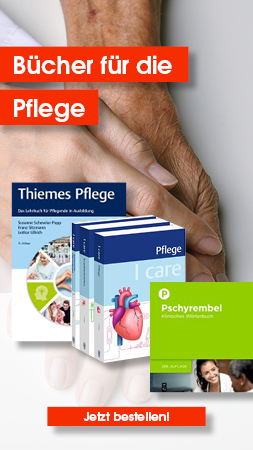Buch, Englisch, 366 Seiten, Format (B × H): 178 mm x 254 mm, Gewicht: 816 g
Reasoning, Decision Making, and Communication in Health Sciences
Buch, Englisch, 366 Seiten, Format (B × H): 178 mm x 254 mm, Gewicht: 816 g
ISBN: 978-1-4665-1558-1
Verlag: Taylor & Francis
Mastery of quality health care and patient safety begins as soon as we open the hospital doors for the first time and start acquiring practical experience. The acquisition of such experience includes much more than the development of sensorimotor skills and basic knowledge of the sciences. It relies on effective reasoning, decision making, and communication shared by all health professionals, including physicians, nurses, dentists, pharmacists, physiotherapists, and administrators.
A Primer on Clinical Experience in Medicine: Reasoning, Decision Making, and Communication in Health Sciences is about these essential skills. It describes how physicians and health professionals reason, make decisions, and practice medicine. Covering the basic considerations related to clinical and caregiver reasoning, it lays out a roadmap to help those new to health care as well as seasoned veterans overcome the complexities of working for the well-being of those who trust us with their physical, mental, and spiritual health.
The book provides a step-by-step breakdown of the reasoning process for clinical work and clinical care. It examines both general and medical ways of thinking, reasoning, argumentation, fact finding, and using evidence. Outlining the fundamentals of decision making, it integrates coverage of clinical reasoning, risk assessment, diagnosis, treatment, and prognosis in evidence-based medicine. It also:
- Describes how to evaluate the success (effectiveness and cure) and failure (error and harm) of clinical and community actions
- Considers communication with patients and outlines strategies, successes, failures, and possible remedies—including offices, bedside, intervention, and care settings
- Examines strategies, successes, failures, and possible remedies for communication with peers—including interpersonal communication, morning reports, rounds, and research gatherings
The book describes vehicles, opportunities, and environments for enhanced professional communication, including patient interviews, clinical case reports, and morning reports. It includes numerous examples that demonstrate the importance of sound reasoning, decision making, and communication and also considers future implications for research, management, planning, and evaluation.
Zielgruppe
Senior managers in healthcare, physicians, nurses, and other clinicians who have patient care responsibilities in hospitals, nursing homes and home healthcare environments. Directors and department heads in ancillary services such as lab, rehab, diagnostic testing and community care services. Nursing and Medical Schools; as well as medical and hospital libraries
Autoren/Hrsg.
Fachgebiete
- Medizin | Veterinärmedizin Medizin | Public Health | Pharmazie | Zahnmedizin Medizin, Gesundheitswesen Public Health, Gesundheitsmanagement, Gesundheitsökonomie, Gesundheitspolitik
- Medizin | Veterinärmedizin Medizin | Public Health | Pharmazie | Zahnmedizin Pflege Pflegeforschung, Pflegemanagement
- Medizin | Veterinärmedizin Medizin | Public Health | Pharmazie | Zahnmedizin Medizin, Gesundheitswesen Krankenhausmanagement, Praxismanagement
- Medizin | Veterinärmedizin Medizin | Public Health | Pharmazie | Zahnmedizin Medizin, Gesundheitswesen Medizinrecht, Gesundheitsrecht
Weitere Infos & Material
Ways We See, Learn, and Practice Medicine Today: Paradigms of What We Are Doing
Executive Summary
Not-So-Random Leading Thoughts
Introductory Comments
Art, Science, and Craft of Medicine
Medicine as Art
Medicine as Science
Scientific Theory
Scientific Method
Medicine as Craft
Deterministic vs. Probabilistic Paradigm of Medicine: Uncertainty, Fuzziness, and Chaos
Probability and Clinical Uncertainty
Fuzzy Theory
Chaos Theory in Medicine
Medicine as Philosophy: Philosophy in Medicine and Philosophy of Medicine
Philosophy in Medicine
Philosophy of Medicine
Practice and Theory of Medicine: Which One Will You Learn?
Practice of Medicine
Theory of Medicine
Evidence-Based Medicine and Other Evidence-Based Health Sciences
Beyond the Original Concept of Evidence-Based Medicine: Evidence-Based Critical Thinking Medicine and Reflective Uses of Evidence
Critical Thinking
Reflective Uses of Evidence
Conclusions: What Exactly Should We Teach and Learn Then?
References
How Physicians and Other Health Professionals Really (or Should) Think
Executive Summary
Not-So-Random Leading Thoughts
Introductory Comments
General Medical Thinking and Reasoning
Basic Considerations Related to Clinical Care and Caregivers’ Reasoning
Our Thinking and Reasoning: Essential Definitions and Meanings
Tools for Argumentation
"Naked" Argument (Enthymeme) or Argument at Its Simplest: A "Two-Element" Reasoning
"Classical" Form of Reasoning: Categorical Syllogism or "Three-Element" Reasoning
"Modern" Form of Toulmin’s Model of Argument: A "Multiple (six-) Element" Way of Reasoning to Reach Valid Conclusions
Reminder Regarding Some Additional and Fundamental Considerations
Challenges of Causal Reasoning within the General Context of Medical Thinking and Reasoning
Causal Reasoning in a Quantitative and Qualitative Way
How We Look at Causes: Single or Multiple-Sets, Chains, Webs, Concept Maps
Ways of Searching for Causes
Criteria of Causality
Disease or Event Frequencies and Fractions in Causal Reasoning
Beyond Causality: Combining Frequencies, Fractions, Risks, and Proportions
Quantifying Our Uncertainties
Fallacies in Medical Reasoning and Scientific Thinking in General
Role of Causal Reasoning in Medical Thinking
Critical Thinking, Communication, and Decision Making and Their Connection to Medical Ethics
Conclusion
References
Reasoning in Step-by-Step Clinical Work and Care: Risk, Diagnosis, Treatment, and Prognosis
Executive Summary
Not-So-Random Leading Thoughts
Introductory Comments
"You Are at Risk." What Does This Mean and How Can It Be Mutually Understood by Us, Our Patients, and the Community?
What Is "Risk" in Health Sciences?
Are Risk Characteristics All the Same? Risk Factors and Risk Markers






